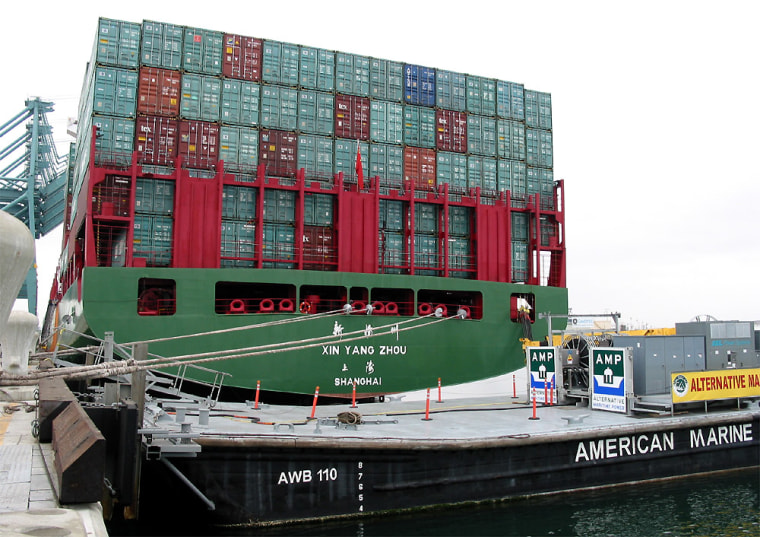Environmental groups claimed a victory Monday when the Port of Los Angeles adopted for container ships a technology that's long been used by other watercraft: plugging them into the power grid while docked instead of running dirty diesel engines.
The new terminal fulfills part of a legal settlement by the Port of Los Angeles, which had been sued by activists who argued that the terminal was being built without proper studies on the health effects on local neighborhoods.
The Coalition for Clean Air, a plaintiff in the lawsuit, called it a win-win solution.
"These ports are America's gateway to Asia, which means they'll be growing rapidly for a long time to come," said Todd Campbell, the group's policy director. "However, growth cannot come at the expense of our environment and public health. Today we're unveiling a tool that will help us keep pollution in check without stifling economic expansion."
The activists include the Natural Resources Defense Council, which noted that the ports of Los Angeles and nearby Long Beach are the single largest source of air pollution in Southern California — emitting as much diesel exhaust as 16,000 tractor-trailers idling their engines 24 hours a day.
Communities around the ports see high rates of asthma, bronchitis and suffer some of the highest cancer risk in the area, the NRDC said in a statement.
The new terminal is expected to eliminate more than three tons of nitrogen oxides and 350 pounds of diesel particulate matter for each ship that plugs in.
